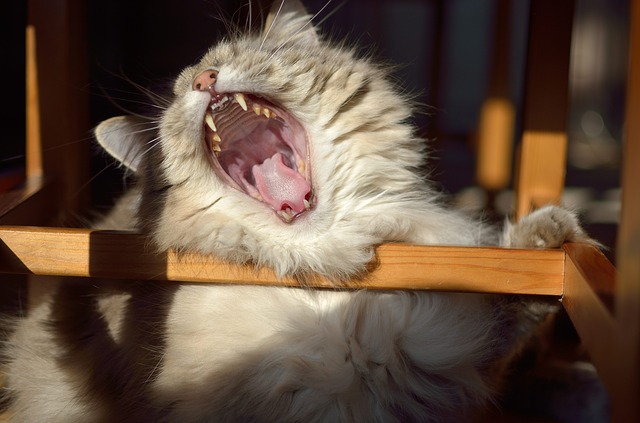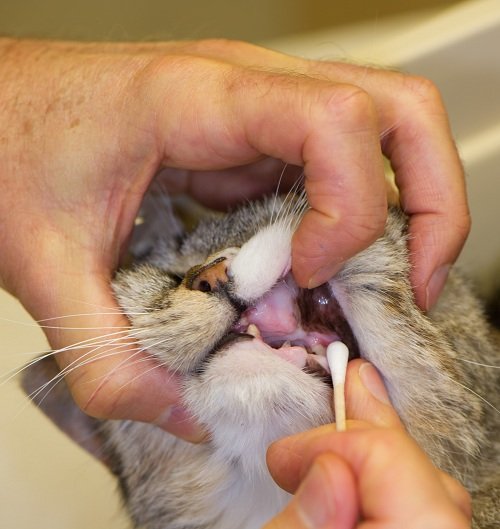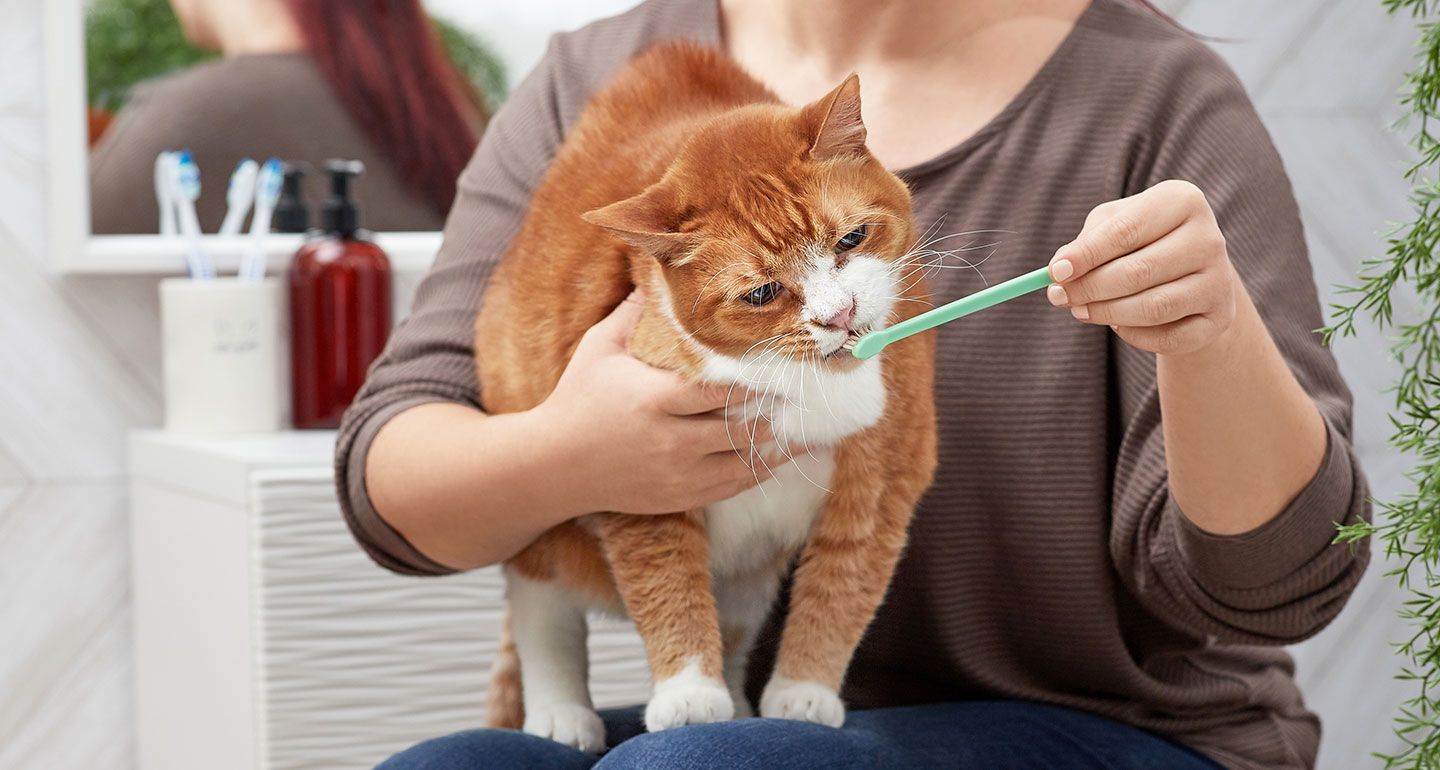Does your kitty have bad stinky breath? Do you feel like dashing off the scene when she puffs in your direction?
Well, many cat parents are in your predicament. Our feline friends may be clean but they don’t know much about oral health.
Your cat can’t grab a toothbrush and clean her little fangs. That’s solely your responsibility.
If you’ve dealt with cats, you know that they loathe the idea of someone poking their gums and teeth in the name of brushing.
Unless you train yours earlier on to tolerate brushing, she is likely to hate the exercise.
As a result, most people throw in the towel and stop brushing their pets’ teeth altogether.
Over time, food stuck in your cat’s teeth causes bad breath, plaque, and tartar.
The latter is the accumulation of an unsightly yellow substance at the bottom of the cat’s teeth.
Not only does tartar lead to stinky breath but it hosts bacteria that trigger periodontal disease.
Is there any way you can scrape off tartar off your cat’s teeth at home?
The answer is yes and we have a detailed guide for you below.
The Danger of Tartar

Tartar is far more dangerous than many of us really know. It provides a home for endless bacteria.
If you were to observe the microbial activity of your kitty’s teeth with tartar, you’d be shocked.
In the initial stages, tartar forms above the gum line. This causes gingivitis (the inflammation of the gums) and can trigger bleeding.
If nothing is done, gingivitis will graduate to periodontal disease, more inflammation, and teeth loss.
That’s not the end of the story. Tartar eventually builds along the gum line pushing the gums further away from the roots.
As your cat’s gums recede, they reveal the enamel-free sensitive part of the kitty’s teeth which can be very painful.
If you fail to remove tartar at this point, the bacteria will grow and multiply below the gum line.
As the cat swallows saliva or food, the bacteria will ultimately find their way to major organs including the kidney, heart, and liver.
Now, you have a sick cat with bad breath and unsightly teeth. No one wants this. Read the guide to know how to scrape tartar from your cat’s teeth.
What You Need
- Dental scaler
- Towel
- Gloves
- Toothbrush
- Surgical mask
How to Do It

1. Preparation
Cats are not the easiest animals to get tartar off. For one, they have tiny mouths and equally tiny fangs.
You’d have to be careful around their mouths lest you injure them with the instrument.
Secondly, the teeth are close to each other. This presents challenges working with a pointy dental scaler.
Perhaps the most problematic thing about kitties is that they are headstrong. They possess a strong will and would rarely do stuff they don’t want to.
Removal of tartar involves poking on their teeth over and over again. Be prepared psychologically for the exercise.
You need to be calm and patient the whole time. You may have to take breaks in between, pet the cat more, talk endlessly, and do all you can to get the cat to cooperate.
Also, get your tools in the right place before you proceed.
Related Post: Kitten Teeth vs. Cat Teeth: 5 Most Important Differences Every Kitty Owner Should Know
2. Placement
There are several positions you can utilize to be effective when cleaning your cat’s teeth.
You can place her on the side or in a standing position with her chin lifted up.
The best, however, is to let her lie on her back on your lap. This way, you can get to all the teeth with minimal effort.
3. Safety first
Before you get to work, ensure you have your safety equipment on. You don’t want to transfer any bacteria to yourself.
Use latex gloves on your hands and wear a nose mask.
4. Get scraping
With all the safety equipment in check and the tools in a nearby position, proceed to the task.
First, grab the cat and wrap a towel around her. This keeps her contained so she doesn’t move too much or scratch you. Now place her on your lap facing up.
Grab the dental scaler and run it over all the teeth – one by one. Keep in mind that this tool is sharp and can hurt your cat fast.
You want to start scraping the tartar above the gum line first. The scaler is curved so it can reach the back of the tooth and other hard-to-reach areas.
Take your time and get rid of every bit of tartar before moving to another tooth.
When you reach the back of the mouth, you might have to grab a toothbrush first before going in with the scaler.
You do this to keep the tartar removed previously from going down the throat.
Now, get the dental tool and scrape off the tartar carefully until the tooth is clean.
Be sure to run it below the gum line as well to get the accumulated dirt in there as well.
Go through all the teeth one by one until the results are satisfactory.
Word of Caution
While removal of tartar at home can be done, it is best to have a professional carry out the exercise.
The chance of your cat sitting still throughout is very minimal. That means the risk of hurting her is also higher.
With the pain and inflammation that tartar brings, you don’t want to add salt to injury.
For the safety of the cat, consider taking her to the vet for tartar removal. She will be put under anesthesia so she sleeps the entire time.
Additionally, vets perform x-rays to know the extent of the problem and how best to treat it.
They also hook your pet up to machines that monitor her blood pressure, temperature, and heart rate.
Closing Thoughts
Cat dental care is a necessary part of pet ownership.
Part of it is making sure your cat doesn’t have tartar in her teeth.
Going to a vet is the recommended route. However, if you don’t have the luxury, feel free to do it at home.
It needs patience, commitment, calmness, and care but it can be done.

Hi! I am Eleanor Price. I started this website after my cat, Louie, almost died from a case of botulism (a type of food poisoning often caused by bacteria that grow on food items). Turned out that my cat’s diet was the problem. I have made it my duty to provide the best information and recommendations about everything cat lovers need to know about their felines’ health and wellbeing. My goal is to find the most informative content on anything feline-related and share it with fellow hardworking kitty lovers.

